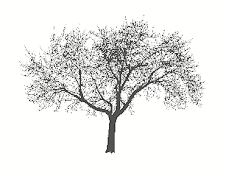Choose one of the topics below and write a 6-8 page paper which analyzes any of the texts from O’Hara to the end of the semester. You should incorporate one secondary source (suggestions to come momentarily); please choose your topic, read the secondary source, and begin to think about how to incorporate it before next Thursday (Dec. 4). Since several of these topics touch on themes we have already discussed in class, so be sure to discuss passages and subjects other than/in addition to the ones we covered together.
1. Analyze the position of the observer and the observed in one or two of the “city” works we have read. (O’Hara, Crane, Poe, Hitchcock, James, Wideman, Scott). There are many possible perspectives to take on this topic, so narrow it down carefully. Possibilities include:
-Moments when the position of the observer becomes that of the observed (as in Rear Window, Blade Runner, Jolly Corner). What kind of power does an observer have, and what causes the shift between observer and observed? There are lots of paranoid characters; what dynamic produces this paranoia?
-In a film: discuss the use of close-ups, panoramic shots, unusual camera angles or camera movement, and their effect on the audience. How does the camera play the role of a “narrator” in Rear Window? What is the relationship between the director’s camera and the cameras (Jefferies’ still photography, the blimps in Rear Window) in the films themselves?
-Many of these characters position themselves high above “street level” at some point (including Rear Window, Jolly Corner, Hiding Place, Blade Runner). What relationship to the city do they achieve with this panoramic perspective? How does a “bird’s eye” view either grant or take away power?
2. Discuss the depiction of criminals and crime in one or more text. What kind of social interaction is a crime, and how does that relate to the larger set of social interactions in the city? How does crime arise (does it come from the sinful nature of humanity; social inequities; natural forces; somewhere else)? What does the depiction of criminals and criminal behavior tell us about how these texts view the city?
3. Several of the texts we have considered (Maggie, Rear Window, Hiding Place) depict urban life as something akin to small-town, village, or even rural life. Why do the texts invite this comparison and blur the lines between city and country? Is there an implied value judgment in either direction (small towns are better than cities, or the opposite)? If a city neighborhood seems to embody a village or rural setting, what does that imply about urban inhabitants and their interactions? You might wish to compare an urban example with the small-town life in Twin Peaks.
4. Trace images of machines and/or technology in one or more texts. How do people relate to technology, and how does it change the ordinary human relationship with the environment and with one another? Do characters resist the impact of the mechanical on their world—or conversely, do they invite it—and why? Look for figurative language as well as for literal examples of technology.
5. What is it like to live in an apartment? Examine one or two of the texts that depict apartment life or compare apartments to houses (Crane, Hitchcock, James, Scott) and analyze the impact of the apartment on ideas of personhood. What specific elements of apartment life are different from the experience of living in a house? How does the physical structure of apartment life impact one’s idea of oneself, one’s relationship to friends and family, one’s relationship to strangers, one’s relationship to the public? If a house typically represents the private, the personal, the domestic—and by extension, the inner self—what does an apartment represent? Use specific examples.

Saturday, November 29, 2008
Subscribe to:
Post Comments (Atom)
No comments:
Post a Comment